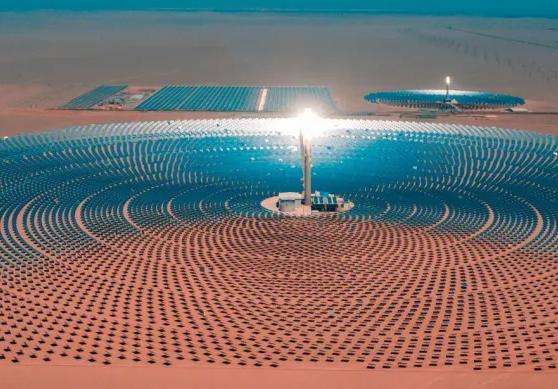Biomass energy is the energy form of solar energy stored in biomass in the form of chemical energy, that is, energy using biomass as a carrier. It is derived directly or indirectly from the photosynthesis of green plants and can be converted into conventional solid, liquid and gaseous fuels. It is inexhaustible and is a renewable energy source and the only renewable energy source.
Biological energy is a kind of energy that uses living things as a medium to store solar energy in the form of chemical energy. It is directly or indirectly derived from plant photosynthesis. Its reserves are extremely significant. Only plants on earth have an annual production equivalent to 20 times the mineral energy currently consumed by humans. Among the various renewable energy sources, biomass is stored solar energy and the only source of carbonne renewable that can be converted into conventional solid, liquid and gaseous fuels. It is estimated that the carbon fixed by plant photosynthesis on earth reaches 2x1011t each year and that the energy content reaches 3x1021d
Areas of employment of the application technology of Biomass energy are diverse, including but not limited to the following:
1. Biomass Energy Engineer: Biomass energy engineers may engage in the research and development of biomass energy development, utilization and conversion technologies. They can design, build and manage biomass energy utilization facilities, such as biomass power plants, biomass gasification devices, etc.
2. Biomass Energy Project Management: The planning, design, implementation and management of energy projectsbiomass require professional project managers. They can work on feasibility studies, financing, project planning, resource allocation, and monitoring and evaluation of biomass projects.
3. Research and development of biofuel and bioenergy technologies: R&D personnel in the field of biomass energy application technologies can engage in the development and improvement of biomass fuels, including pelletized biomass, liquid biomass fuels, etc. as well as fuels from biomass. Innovation and development of energy technologies.
4. Biomass Energy Policy and Management: Biomass energy policy formulation and management requires professional staff capable of engaging in the formulation, supervision and evaluation of biomass energy policies. bi energyomasse to promote the sustainable development of biomass energy.
5. Biomass waste processing and resource utilization: Biomass energy application technology may also involve the processing and resource utilization of biomass waste, including research on biomass waste processing technologies. biomass, waste resource technology development, environmental protection and sustainable use. etc.
6. Biomass technical advice and services: Companies and organizations can seek professional advice and services in biomass energy application technology. Therefore, institutions and individuals that provide technical advice, project assessments and solutions are also one of the relevant employment directions.
It should be noted that the orientation ofEmployment in biomass energy application technology may vary by region and industry, and will also be affected by factors such as market demand, policy environment and technology development. Therefore, when choosing a job direction, you can consider market demand, personal needs, interests and abilities, and pay attention to development trends in related fields in a timely manner.
Common biomass energy application technologies
1. Biomass Power Generation: By burning biomass materials, such as wood chips, straw, etc., it is generated. in the boiler The steam then passes through a steam turbine to produce electricity. This technology is widely used in biomass power plants, converting biomass resources into electricityand inject them into the electricity network.
2. Biomass Gasification: Biomass gasification involves converting biomass materials into synthetic gas under high temperature and anoxic conditions. The main components are hydrogen, carbon monoxide and methane. Syngas can be used as fuel in industrial processes or to produce electricity.
3. Biomass Liquid Fuel: Biomass is converted into liquid fuels, such as biodiesel, bioethanol, etc., through pyrolysis, dissolution or gasification. These liquid fuels are used as transportation, heating and industrial fuels.
4. Biomass thermal energy utilization: Use thermal energy released from biomass combustion for heating, cooling and hot water supply. The thermal energy of biomass can be used by combustiondirect ion, gasification and fuel cells.
5. Biomass gas fuel: Use biomass waste through fermentation and anaerobic digestion to produce gas, such as biogas and biogas. These gases can be used as fuel to power equipment such as gas ovens and generators.














